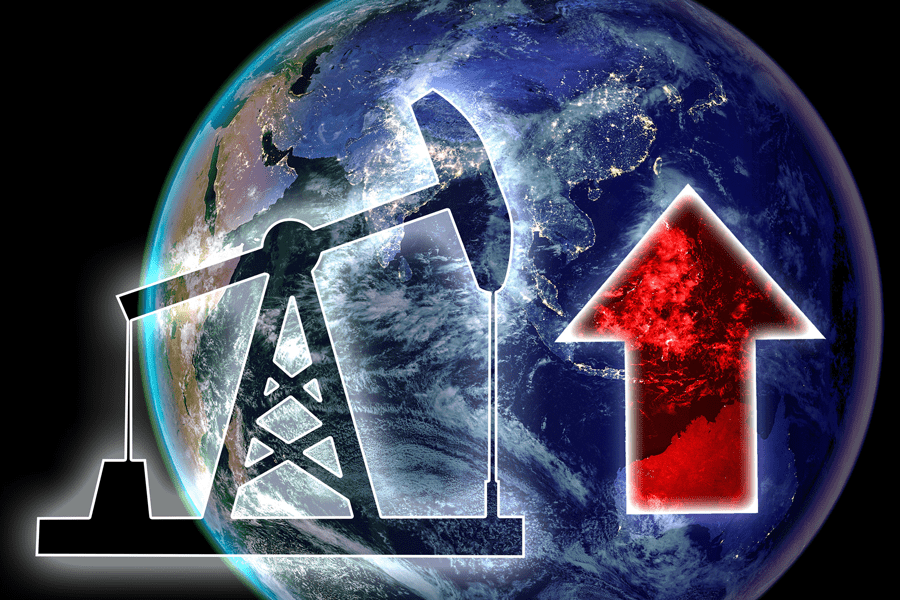As 2021 came to a close, energy companies and organizations began looking at 2022 and started making plans based on supply and demand expectations.
Three organizations that provide market information are the Paris-based International Energy Agency (IEA), which represents countries that are net importers of crude oil; the Energy Information Administration (EIA), the data collection and forecasting arm of the Department of Energy in Washington, DC; and the Organization of Petroleum Exporting Countries (OPEC), the cartel of 13 countries that produce and export crude oil around the world.
These organizations issued their forecasts recently, and they all agree that the global economy will continue to improve in 2022 following the crash of 2020 and recovery in 2021. Global economic growth forecasts for both 2021 and 2022 remain at 5.6 percent and 4.2 percent, respectively, according to OPEC’s economic analysis. India and China will experience the largest economic growth at 6.8 percent and 5.8 percent, respectively, in 2022 followed by the U.S. at 4.1 percent, the Euro-zone at 3.9 percent and Russia at 2.7 percent.
Even though all three organizations agree the global economy will continue to improve, the impact of the pandemic remains a significant concern.
“The surge in new COVID-19 cases is expected to temporarily slow, but not upend, the recovery of oil demand that is under way,” according to IEA’s December 2021 analysis. “Global oil demand is forecast to grow by 5.4 million barrels per day (b/d) in 2021 and a further 3.3 million b/d next year, when it rebounds to pre-COVID levels at 99.5 million b/d.”
OPEC predicts global demand in 2022 at 100.6 million b/d. EIA forecasts 100.5 million b/d.
Crude oil production is expected to rise, too.
OPEC has been trying to manage oil markets for years. In 2020, OPEC and some non-member countries, including Russia, known as OPEC+, agreed to cut their production in response to the price collapse which was created by a slump in demand. As demand increased in 2021, OPEC+ decided to increase production quotas by 400,000 b/d.
Non-OPEC liquids supply is expected to grow by 0.7 million b/d in 2021 to average 63.6 million b/d. OPEC’s forecast for non-OPEC liquids supply growth in 2022 is 3.0 million b/d to average 66.7 million b/d. Russia and the U.S. are expected to be the main drivers of next year’s growth, contributing increments of 1.0 million b/d and 0.9 million b/d, respectively. In October, OPEC crude oil production averaged 27.45 million b/d.
As demand rose this year, global crude oil inventories declined. IEA said stock in OECD industry fell to 2,737 million barrels, some 240 million barrels below the most recent five-year average.
In the U.S., inventories for crude oil, distillate, propane and gasoline are below the five-year average, indicating supplies remain tight going into 2022.
As oil prices rose in 2021, political leaders around the globe began to hear criticism from consumers and many tried to ease the pressure in various ways.
U.S. President Joe Biden asked OPEC+ to increase production above its announced quota increase of 400,000 barrels per day, but the cartel members declined and decided to retain their previous production increase.
Biden decided he would try to drive down gasoline prices by releasing 50 million barrels of oil from the Strategic Petroleum Reserve. Releases should start around the beginning of 2022 and last about six months. Many analysts believe the releases will have little impact on price but, with so many uncertainties, analysts find the current supply-and-demand situation unsettling.
Another factor to be considered is the pledge made by many countries attending the COP26 summit in Glasgow, Scotland, to reduce emissions. Although the pledges should not have any immediate effect on oil prices, they do indicate that these countries will continue to advocate for further restrictions on fossil fuels (oil, natural gas, coal). Highlights of the summit include support for an international market for carbon trading and commitments of $100 billion per year of support to low-income economies.
Factor in rising inflation, reduced interest by some banks to finance oil ventures, increased regulations and unpredictable weather, and you have many unanswered pieces to the puzzle.
The EIA, however, forecasts Brent, which is traded on the international market, to average between $60 and $70 per barrel in 2022. West Texas Intermediate (WTI) usually trades $2 to $4 less than Brent.
Historically, the oil industry has faced many challenges: Some visible, others not so obvious. The new year promises to bring more of the same.
Alex Mills is the former President of the Texas Alliance of Energy Producers. The Alliance is the largest state oil and gas associations in the nation with more than 3,000 members in 305 cities and 28 states.
Oil and gas operations are commonly found in remote locations far from company headquarters. Now, it's possible to monitor pump operations, collate and analyze seismic data, and track employees around the world from almost anywhere. Whether employees are in the office or in the field, the internet and related applications enable a greater multidirectional flow of information – and control – than ever before.












